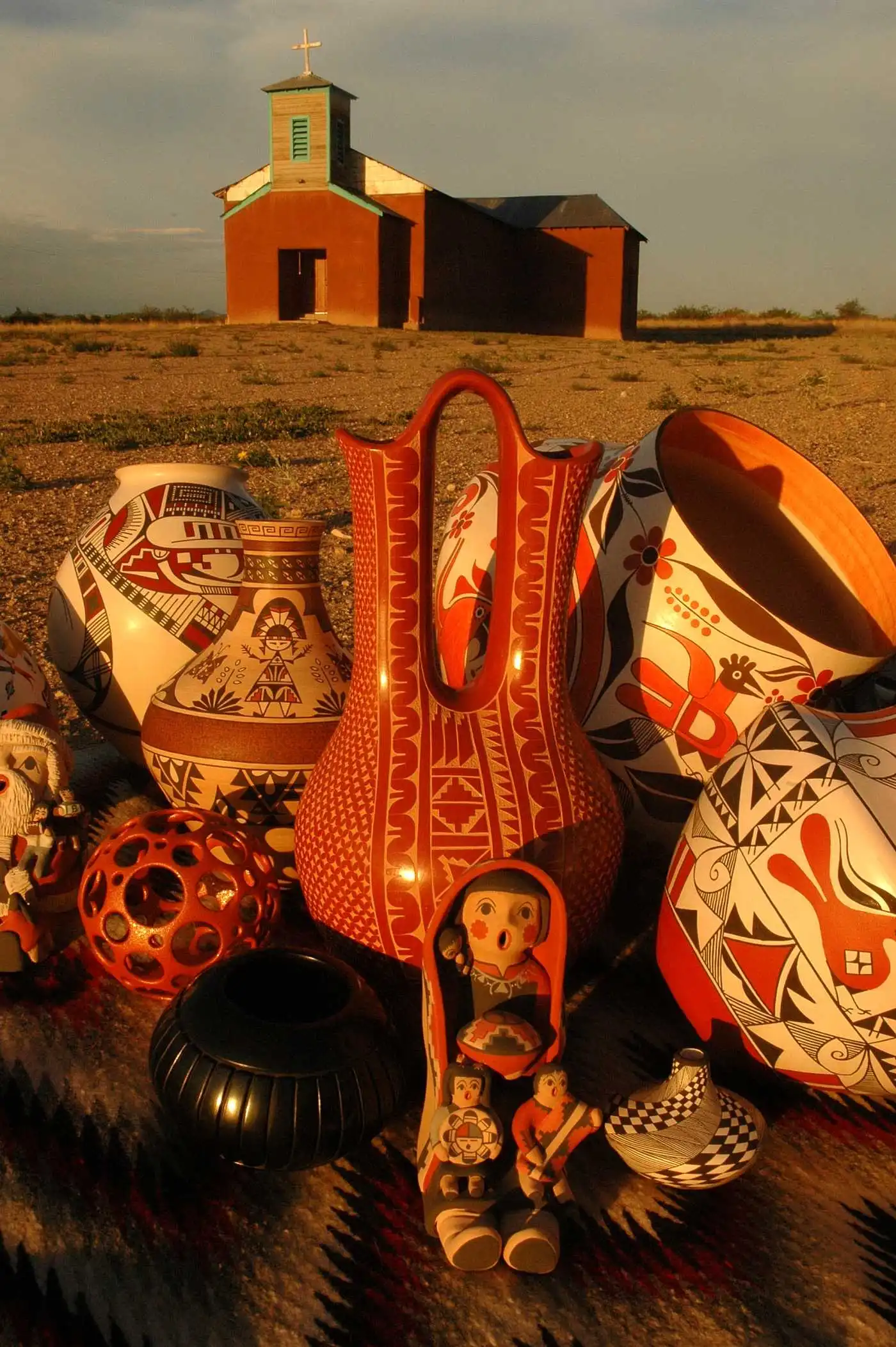It isn’t always easy to tell if Pueblo pottery is real, damaged or a knockoff. Faux and poorly made Pueblo pots are sometimes sold to unsuspecting consumers in stores, and other venues. With that in mind, how does a collector know if the pottery has a crack hidden under the glaze where they cannot see it? What should one look for when buying Pueblo pottery? Consider the following tips from pottery expert and author Guy Berger, owner of Palms Trading Company in Albuquerque, New Mexico.
1. The shape should be streamlined and symmetrical, but there is room for some imperfection. More valuable 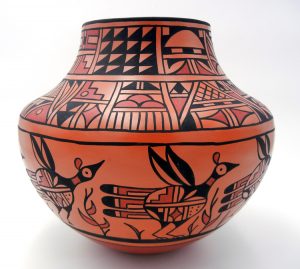 pottery is handmade, after all, and as such, it’s very difficult for artists to achieve complete symmetry.
pottery is handmade, after all, and as such, it’s very difficult for artists to achieve complete symmetry.
2. Ceramic (molded pottery) is snowy white, while natural clay is off-white and most of the time has small black specks that resemble pepper. These specks are typically 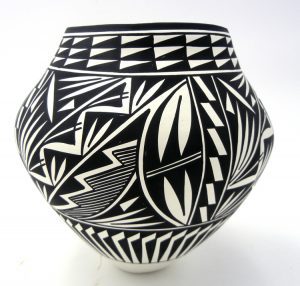 old pottery shards that have been added to the new clay to temper the pottery so it’s stronger.
old pottery shards that have been added to the new clay to temper the pottery so it’s stronger.
3. Most pueblo pottery should “ring” when tapped with your knuckle. If the pot “clanks,” it’s more than likely cracked, even though you may not be able to see the crack clearly.
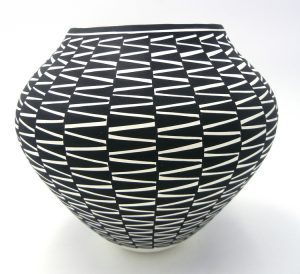
4. Design lines should be clean, sharp and fairly unique, but not too clean and sharp (indicating they are, in fact, painted by hand). Moreover, many pots with the same design could indicate mass production, not pieces crafted by hand.
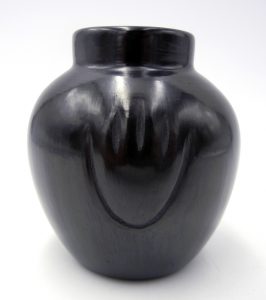 5. Many pueblo potters, such as those from Santa Clara and San Ildefonso, polish their pieces with small, smooth stones collected over generations. These stones leave a detectable mark where the artist moved the stone back and forth over the surface of the pottery. The very best polishers leave very little blemish on the pot. If you can’t see any of this back and forth within polish, however, it’s more than likely glazed, and not a true handmade pueblo piece.
5. Many pueblo potters, such as those from Santa Clara and San Ildefonso, polish their pieces with small, smooth stones collected over generations. These stones leave a detectable mark where the artist moved the stone back and forth over the surface of the pottery. The very best polishers leave very little blemish on the pot. If you can’t see any of this back and forth within polish, however, it’s more than likely glazed, and not a true handmade pueblo piece.
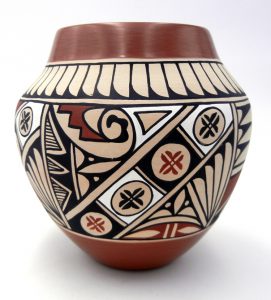 6. Painted designs that are created with natural paint, made from various plants and minerals, will not cover surfaces like commercial paints will. Some light and dark areas will be visible on most handmade pots.
6. Painted designs that are created with natural paint, made from various plants and minerals, will not cover surfaces like commercial paints will. Some light and dark areas will be visible on most handmade pots.



